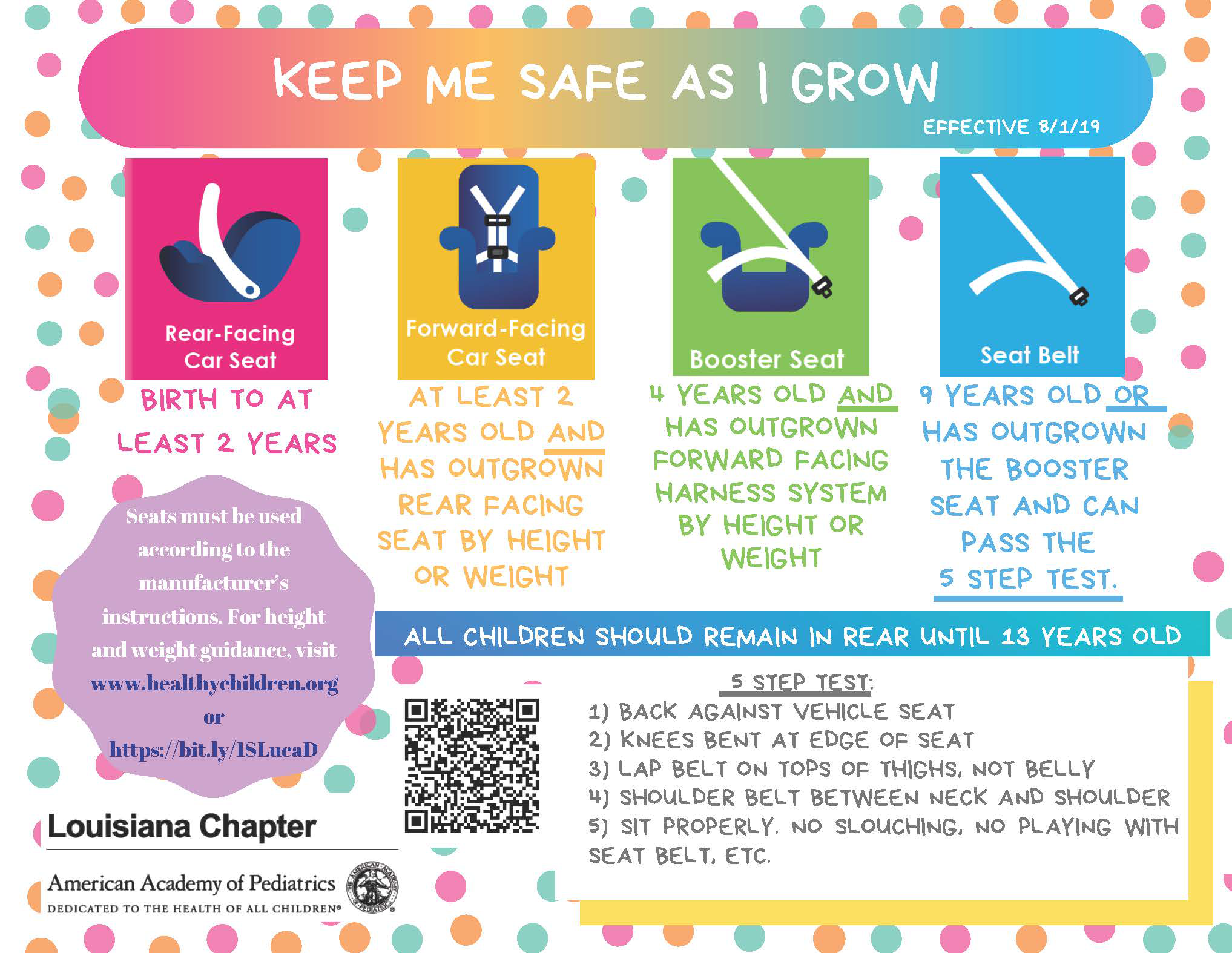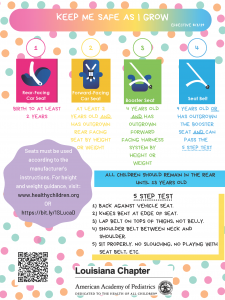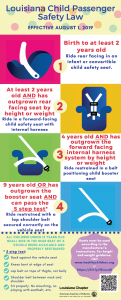Health Topics
Immunization Resources
Guidelines & Schedules
- AAP Immunization Page
- Education and Training
Links to the CDC&Ps vaccine administration videos. - Birth-18 Years & “Catch-up” Immunization Schedules
- ACIP Vaccine Recommendations
- CDC-FDA information on Vaccine Safety
- Red Book Online Vaccine Status Chart – Requires AAP Membership
Forms, Handouts & Toolkits
American Academy of Pediatrics/ Healthy Children.org Handouts for Parents:
- Why Immunize Your Child
- How Safe are Vaccines
- Immunization and Breastfeeding
- Multiple Vaccinations at one Time
- Vaccination is the Best Protection
- Why Immunize Your Child
LINKS
Louisiana Immunization Network for Kids Statewide
Provides specific policy on the following:
- Diphtheria
- Pertussis
- Tetanus
- Polio
- Haemophilus influenzae Type B
- Hepatitis A
- Hepatitis B
- Human Papillomavirus
- Influenza
- Measles
- Mumps
- Rubella
- Meningococcal
- Pneumococcal
- Rotavirus
- Varicella
Vaccine-Specific ACIP Recommendations
Keep Me Safe As I Grow
Car Seat and Safety Belt Restraints
Car Seat Inpsection Sites
Downloadable Documents
Region A: Ascension, East Baton Rouge, Livingston, & West Baton Rouge Parishes
Region B: Jefferson, Orleans, Plaquemines, St. Charles, St. John, & St. Bernard Parishes
Region C: Lafourche, St. James, St. Mary, & Terrebonne Parishes
Region D: Allen, Beauregard, & Calcasieu Parishes
Region E: Rapides, Natchitoches, Vernon, & Avoyelles Parishes
Region F: Ouachita, Richland, West Carroll, & Lincoln Parishes
Region G: Bossier, Caddo, Desoto, & Webster Parishes
Region I: Lafayette, St. Landry, Acadia, & St. Martin Parishes
Region L: Northshore: St. Tammany, Tangipahoa, Washington & St. Helena Parishes
Suicide Prevention Resources
The training programs below are from the Best Practices Registry (BPR) for Suicide Prevention which have been prior vetted by the Suicide Prevention Resource Center (SPRC). The SPRC and American Foundation for Suicide Prevention worked together to create the BPR. Additionally, the National Registry of Evidence-based Programs and Practices (NREPP) created by the Substance Abuse and Mental Health Services Administration (SAMHSA) provides a list of evidence-based treatment and education programs that address suicide. The NREPP models are also included in the Best Practice Registry and have been included on the Act 582 list provided by DHH. Courses fall into sections within the BPR as described below.
- Evidence-Based Programs – These programs have undergone rigorous evaluation and demonstrated positive outcomes.
- Expert/Consensus Statements – Content from the statements summarize the best knowledge in suicide prevention in the forms of guidelines, protocols or consensus statements. Statements result from a collaborative process with key experts and stakeholders and/or a thorough review of the literature by a subject matter expert.
- Adherence to Standards – This is a listing of programs, practices, policies, protocols and informational materials with content that has been reviewed by suicide prevention experts according to current program development standards and recommendations. All materials were found to meet standards of accuracy, safety, and programmatic guidelines.
SPRC Workshops & Toolkits
The SPRC Research to Practice Webinars address the science of suicide prevention in practical terms. They are designed for practitioners, researchers and others working in the field. Each webinar is 90 minutes in length and moderated by an SPRC staff member. These are archived and no certificate of completion is available. To access a list of archived webinars, visit the SPRC training institute.
Online Trainings in Suicide Assessment, Intervention, Treatment and Management
as per Act 582:
Counseling on Assess to Lethal Means (CALM)
A free, two-hour workshop designed to help mental health providers implement counseling strategies to help clients and their families reduce access to lethal means, particularly (but not exclusively) firearms; completion certificate available. To start the course, select “enter course.”
An hour-long, online training simulation that teaches primary care providers to: 1) identify patients that exhibit signs of suicide; 2) engage in collaborative treatment planning; 3) apply motivational interviewing techniques to build trust; and 4) apply best practices in follow-up care. Kognito At-Risk in Primary Care is available from Kognito Interactive for a fee. The course can booked directly on the Kognito website.
At-Risk in the Emergency Department
An hour-long, online interactive training simulation that teaches Emergency Department (ED) staff how to (1) recognize patients who exhibit warning signs of suicide and substance use risk; (2) screen patients for suicide and substance use risk; and (3) respond to patients who screen positive for suicide and substance use risk. The course is available from Kognito Interactive for a fee.
Safety Planning Intervention for Suicide Prevention
This course is based on the evidence-based Suicide Assessment Five Step Evaluation and Triage (SAFET-T) which is on the Best Practice Registry list. The course is free, though there is no certificate of completion. The course is sponsored by the New York State Office of Mental Health and Columbia University. It can be accessed on the Zero Suicide website from the Action Alliance for Suicide Prevention.
Assessment of Suicidal Risk Using the Columbia Suicide Severity Rating Scale (C-SSRS)
This course if offered for free, though there is no certificate of completion. It is sponsored by the New York State Office of Mental Health and Columbia University. It can be accessed on the Zero Suicide website from the Action Alliance for Suicide Prevention.
Plan, Prepare, Prevent: The SOS Signs of Suicide Online Gatekeeper Program
This is the training module of the larger SOS Signs of Suicide Prevention Program (listed in Section I of the BPR). It can also be used independently of the SOS Program. The intended audience for this course is middle and high school staff members, or staff at other organizations looking to deepen their understanding of youth suicide prevention. Plan, Prepare, Prevent is available from Screening for Mental Health.
QPR Institute (Question, Persuade, Refer) Online Courses
The QPR Institute’s online course catalog includes one- to two-hour gatekeeper trainings that teach lay and professional gatekeepers to recognize and respond positively to someone exhibiting suicide warning signs and behaviors. Versions of QPR have been adapted for use with a variety of professionals including medical professionals, EMS/firefighters, school health, corrections, law enforcement, nurses and crisis volunteers. Training is available on the QPR Institute website or via face-to-face training from a qualified trainer for a fee. See the course catalog for additional details.
Suicide Prevention Resource Center
This is a WONDERFUL resource for all things related to suicide. It has prevention information, statistics, population specific recommendations, research, evidenced based practice sections for prevention/ intervention programs, some online training programs, How To guides for schools, PCPs, running survivor groups, media coverage, recommendations for funerals/memorial services, etc. The resource section has a prevention section with the theme of “everyone has a role in suicide intervention”. There is material for family, counselors, justice settings, survivors of others’ suicides, faith based leaders, schools, foster families, reporting on suicide, etc.
Healthcare and Behavioral Healthcare providers section
http://www.sprc.org/for-providers
There’s a tool kit for primary care providers (esp. for rural docs) and for ER departments & there is a fact sheet for EMS workers and what role they can play in suicide prevention.
Zero Suicide
Zero Suicide is a global movement that has called upon and joined together suicide prevention experts from across the globe; to research, evaluate and share prevention successes. The result is continuous improvement and dissemination of tools and instructions for health care professionals, equipping them for effective and caring interactions with those experiencing the despair of suicidal thoughts. The movement is based upon a foundational belief that suicide deaths are preventable.
Resources for Primary Care Providers
http://www.sprc.org/for-providers/primary-care
For the suicidal patient, a visit with the primary care provider (PCP) may be the only chance to connect with the health care system and access effective treatment.
Consider:
Only 32% of the individuals who died by suicide had contact with mental health services in the year before their deaths, but 75% of them saw their PCP.
As a PCP, you can implement some of the most effective strategies for suicide prevention:
- Train staff to identify and respond to warning signs of suicide
- Provide brief intervention
- Recognize and effectively treat depression
- Counsel patients on limiting access to lethal means
Long-standing patient relationships and frequency of contacts between PCPs and their patients make primary care an ideal setting for suicide prevention interventions.
Resources for College Students
College campuses have seen a significant rise in suicides over the past decade. With the increased stressors that come with the transition to college, it’s no surprise that mental illnesses and suicides spike on campus. What is surprising, however; is that only 25% of college students seek help for their mental health problems.
In order to help students who have considered, or previously attempted, suicide as they make their way to college, a comprehensive Suicide Prevention Guide has been created that aims to:
- Lower the stigma associated with suicide, depression, and getting help
- Highlight suicide risk factors, warning signs, and high-risk populations
- Demonstrate how to find a college with strong mental health resources
Online Training
COUNSELING ON ACCESS TO LETHAL MEANS (CALM)
Access to lethal means can determine whether a person who is suicidal dies or survives. This course is designed for providers who counsel people at risk for suicide, primarily mental health and medical providers, but also clergy and social service providers. The first module explains why reducing access to lethal methods of self-harm saves lives. The second module teaches practical skills on when and how to ask suicidal clients about their access to lethal means and how to work with them and their families to reduce their access.
A STRATEGIC PLANNING APPROACH TO SUICIDE PREVENTION
Many public health professionals are called on to develop or expand a suicide prevention program at the state or local level. They want their program to have maximum impact, even with minimal resources. A Strategic Planning Approach to Suicide Prevention can help identify activities that will be effective in addressing the problem of suicide in a community and can prioritize efforts among the various possibilities. This course uses three fictional task forces to illustrate the approach “in action.”
LOCATING AND UNDERSTANDING DATA FOR SUICIDE PREVENTION
Data can contribute to the understanding required to effectively prevent suicide in a state or community. This course will 1) describe the strengths and limitations of data on suicide, suicide attempts, and suicidal ideation; 2) explain some concepts essential to selecting and interpreting data from key sources; 3) describe eight readily-accessible sources of data and how to use them, and 4) explain how to organize this data to inform suicide prevention efforts and educate colleagues, partners, policymakers, and the community.
SUICIDE PREVENTION GATEKEEPER TRAINING PROGRAM
One of the most commonly used suicide prevention activities is gatekeeper training. This course will help participants: understand the role of gatekeeper training; decide if a gatekeeper training program is right for their school, organization, or community; involve stakeholders; choose, implement, and evaluate a gatekeeper training program; and provide ongoing support to sustain the program.
Taking Action
National health care quality improvement trends, such as patient-centered medical homes and primary care and behavioral health integration initiatives, are key opportunities to make suicide prevention practices standard in any primary care office. The following resources will help you get started:
Toolkits
Get the App!
Suicide Safe APP Is Now Available for Download!
SAMHSA’s latest mobile app, Suicide Safe, is now available for free on iOS® and Android™ mobile devices. Be among the first to try this new suicide prevention learning tool—optimized for tablets. The app, based on the nationally recognized Suicide Assessment Five-Step Evaluation and Triage (SAFE-T) card, is designed to help primary care and behavioral health providers integrate suicide prevention strategies into their practices and address suicide risk among their patients.

Asthma
Healthcare Provider Toolkit
Breastfeeding
Resources
Resources for pediatricians related to creating breastfeeding supportive practices (courtesy of Lactation Education Resources)
- How to have a Breastfeeding Friendly Practice: PDF
- Healthcare Providers’ Pledge to Keep Infant Formula Marketing Out of Offices and Clinics: Website
- Pediatrician’s Guide to Getting Paid for Lactation Services: PDF
- Breastfeeding-Friendly Physicians’ Offices Breastfeeding Medicine Protocol #14: PDF
- AAP Resolution: Divesting from Formula Marketing in Pediatric Care: PDF
AAP Breastfeeding Initiatives
A one-stop shop of AAP and other breastfeeding resources including policies, everyday resources for the office or hospital, breastfeeding education/training, speaker’s kits, research, links to key organizations, and resources to support families.
Louisiana Breastfeeding Coalition: Healthcare section of website
Includes extensive information and resources for physicians and other health care providers related to breastfeeding training and educational opportunities, breastfeeding and emergencies, patient education resources, and key breastfeeding initiatives. Other important breastfeeding resources can be found in this section athttp://www.louisianabreastfeedingcoalition.org/providers/resources/
Supporting Breastfeeding in Child Care Centers Project/Toolkit: In collaboration with Our Lady of the Lake Children’s Hospital, local breastfeeding coalitions, and Volunteers of America/Partnerships in Child Care, the Louisiana Breastfeeding Coalition has developed a Breastfeeding-Friendly Child Care Initiative to encourage and improve support for breastfeeding in Louisiana child care centers. This toolkit is designed for Child Care Health Consultants (or Lactation Consultants) to educate child care providers on best practices for supporting breastfeeding and handling breast milk.

Medications and Breastfeeding
Infant Risk Center Hotline– The InfantRisk Center of Texas Tech University Health Sciences Center is dedicated to providing up-to-date evidence-based information on the use of medications during pregnancy and breastfeeding. Thier goal is to provide accurate information regarding the risks of exposure to mothers and their babies. By educating healthcare professionals and the general public alike, they aim to reduce the number of birth defects as well as create healthy breastfeeding relationships. They are open to answer calls Monday-Friday 8am-5pm central time at (806)-352-2519.
LactMed-TOXNET – LactMed also has an iphone app that features data about maternal and infant drug levels, possible effects on lactation and on breastfed infants, and alternative drugs to consider. The apps are made available by the US National Library of Medicine through ToxNet, their Toxicology Data Network. The iPhone and Android versions of LactMed app can be accessed here.
Medications and Mothers’ Milk– is now considered the best source of medication information for breastfeeding patients in the world. The new (2012) updated version continues to expand, adding numerous new drugs and making changes in existing drugs. Most of the world‘s latest data on medications affecting breastfeeding mothers and babies are in this new edition, providing you with the most up-to-date information on the use of medications in breastfeeding mothers. Packed with more than 1300 drugs, diseases, vaccines, and other material, this easy-to-use reference provides the clinician or mother with easily understood recommendations about the use of medications while breastfeeding.
The Gift – Louisiana’s hospital-based breastfeeding initiative and certification program. Learn more about how your hospital can improve its breastfeeding support and become a Gift Certified hospital.
Surgeon General’s Call to Action to Support Breastfeeding: Doctors in Action
This 2 page handout discusses ways physicians can help mothers breastfeed and outlines the key actions identified by the Surgeon General to support breastfeeding in clinical care.
Academy of Breastfeeding Medicine: – is a worldwide organization of physicians dedicated to the promotion, protection and support of breastfeeding and human lactation. Our mission is to unite members of the various medical specialties with this common purpose through: physician education, expansion of knowledge in both breastfeeding science and human lactation, facilitation of optimal breastfeeding practices, and encouragement of the exchange of information among organizations. A central goal of the Academy of Breastfeeding Medicine is the development of clinical protocols for managing common medical problems that may impact breastfeeding success. View the current protocols


